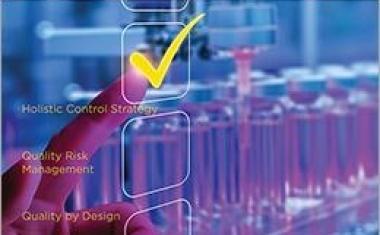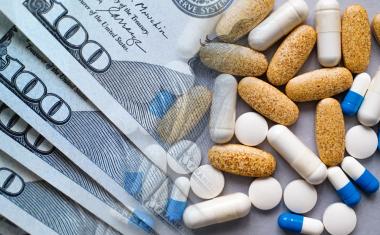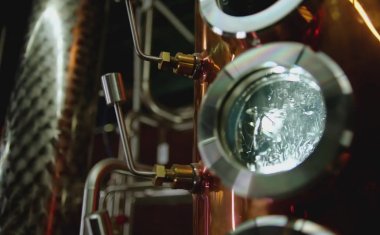Supply Security of Non-cGMP Materials


The topic of supply chain security is not a new one for the pharmaceutical industry, and much of that discussion has been dominated by the cGMP portion of the API supply chain. The discussion regularly addresses reduction of risk, superior quality systems, dependable supply, innovation and competitiveness. These elements are often referred to as the “Value Chain.” Recently, however, the conversation has begun to expand beyond the cGMP portion of the supply chain to a wider focus including the early supply chain, specifically for the supply of non-cGMP materials for API production. Due to changes in conditions related to the supply of these materials from typical sources, supply chain experts are now in need and in search of non-cGMP materials that once again secure the supply of their APIs by embracing Value Chain principles – including from suppliers based in the West, a departure from historical trends.
In the late 1990’s, global chemical capacity expanded dramatically, causing a substantial excess. The expansion mostly took place in India and China, and the raw materials and non-cGMP intermediate production shifted towards the East as a result, with Western producers largely focusing on downstream cGMP manufacturing. (1)
During this same outsource expansion period, quality systems evolved considerably with more oversight needed for the entire supply chain, not just the regulated components. Supplier audits of quality systems were beginning for the non-cGMP suppliers as well, recognizing quality gaps as an issue. (2) Risk mitigation strategies were widely implemented to reduce supply risk, which often meant companies needed to find a second source of materials supply. However, the dependence on the region, particularly Chinese suppliers, continued. (3)
In the early 2000’s chemical capacity in India shifted focus to downstream cGMP manufacturing. This meant that supply chains for non-cGMP materials became even more dependent on suppliers in China. Chinese producers embraced a great deal of chemical technology and were willing to perform difficult to manage chemistries such as nitrations, flourinations, cyanide chemistry, Grignard reagents, and many others that were difficult for Western producers to manage, particularly due to EHS constraints. Therefore the “value” that the downstream manufacturers were receiving was quite good as the supply was mostly dependable, the quality minimally acceptable, and the price very attractive. (4)
Risk-based supply chains continued to evolve through the 2000’s into the 2010’s and many customers noted that the Chinese chemical industry required an enhanced approach to EHS and quality, and the “value” of the supply chain was weakened as costs rose. Chinese supply of raw materials used in pharmaceutical production, however, had become well established. It has recently been estimated that 80% of active ingredients used in US pharmaceutical consumption come from China and India, with Indian companies also relying heavily on raw materials from China. (5)
Over the last few years, the security of supply of non-cGMP materials to customers has changed. As the Chinese government embraces more stringent EHS requirements, many manufacturing facilities have been closed due to poor environmental conditions, and the government has levied substantial environmental taxes on those who remain. The supply of materials from China has seen substantial price increases at a minimum, and often customers’ supply chains have been left with no qualified suppliers of non-cGMP materials. (6) Also, overreliance on a small set of producers can lead to shortages in supply – for example, when a Chinese API manufacturer’s facility exploded in October 2016, a global shortage of an antibiotic drug occurred, since that site was the sole source of the drug. (7)
With the “value” of the value chain no longer driven primarily by price differentiation, the supply of non-cGMP materials is once again shifting – this time reducing the strong regional dependence of Asia, and particularly China, and embracing more Western producers so that the risk of the supply is diversified and reduced. While many Western producers reduced or removed older non-cGMP chemical capacity, some have remained engaged in the supply of non-cGMP materials for pharmaceutical supply chains.
Western partners with deep experience in technology, manufacturing and innovation for the pharmaceutical industry can decrease regional dependency for API supply, increase quality systems and provide the manufacturing and delivery service needed for ensuring uninterrupted availability of critical medicines for patients. Companies can benefit from engaging suppliers with assets for cGMP production as well as non-cGMP materials. Lonza is a case in point with over 600 m3 of chemical capacity at the Visp, Switzerland, complex that operates under a strict ISO quality system. The complex can manufacture early intermediates for both internal and external cGMP advanced intermediate and API supply, in response to changing demand dynamics for non-cGMP services. The right suppliers can also enhance the value chain by engaging the appropriate technologies in the appropriate facilities that drive competitiveness.
Value Chain improvements are critical for all pharmaceutical products. The evolving global API production landscape offers new opportunities for companies to partner with suppliers who will add value throughout the API supply chain and reduce over-dependence on Chinese raw materials.
References
- PricewaterhouseCoopers. The changing dynamics of pharma outsourcing in Asia. https://www.pwc.com.au/industry/healthcare/assets/pharmaoutsourcing_oct08.pdf (7-8), Accessed August 9, 2018.
- Chemistry Today. Evolution never stops in the pharma industry. http://www.madv.eu/upload/ChemistryToday.pdf, Accessed August 9, 2018. (4)
- PricewaterhouseCoopers. (26)
- PricewaterhouseCoopers. (29)
- Outsourced Pharma. “China Rx - Looking for the Truth in Biopharma Outsourcing”, August 1, 2018. Louis Garguilo
- CPhI Online. China’s evolving API industry and the impact of GMP regulations. https://www.cphi.com/china/visit/news-and-updates/chinas-evolving-api-industry-and-impact-gmp-regulations Accessed August 9, 2018.
- ECA Academy. Explosion of an API Manufacturing Site: Supply of Medicinal Products Engandered. https://www.gmp-compliance.org/gmp-news/explosion-of-an-api-manufacturing-site-supply-of-medicinal-products-endangered, Accessed August 24, 2018.
most read

ISPE Good Practice Guide: Validation 4.0
The Validation 4.0 Guide provides a comprehensive approach to ensuring product quality and patient safety throughout a pharmaceutical product's lifecycle.

US Tariffs Fatal for European Pharma
Trump's tariff policy is a considerable burden and a break with previous practice.

Pharma 4.0—the Key Enabler for Successful Digital Transformation in Pharma
Part 3: Seven Theses for successful Digitalization in Pharma

Q1 2025 Chemical Industry: Diverging Trends
The first quarter of 2025 highlights a continued divergence between the European and US chemical industries.

ECA Foundation Aims to Become Largest Pharma Association for GMP/GDP Compliance
The ECA Foundation, one of the most important not-for-profit organizations for regulatory expertise in the pharmaceutical industry, aims to become the largest independent GMP/GDP organization in the world.










